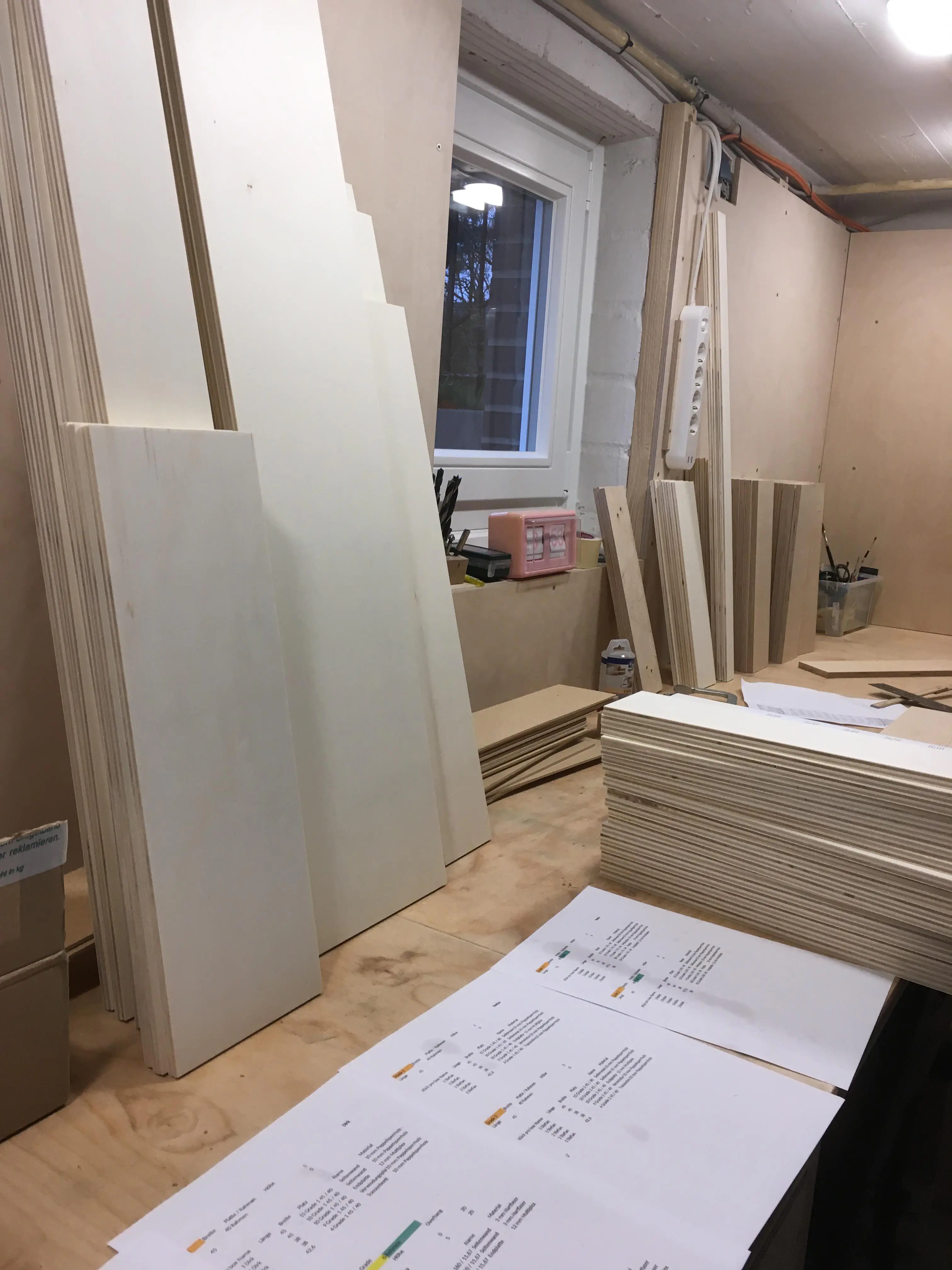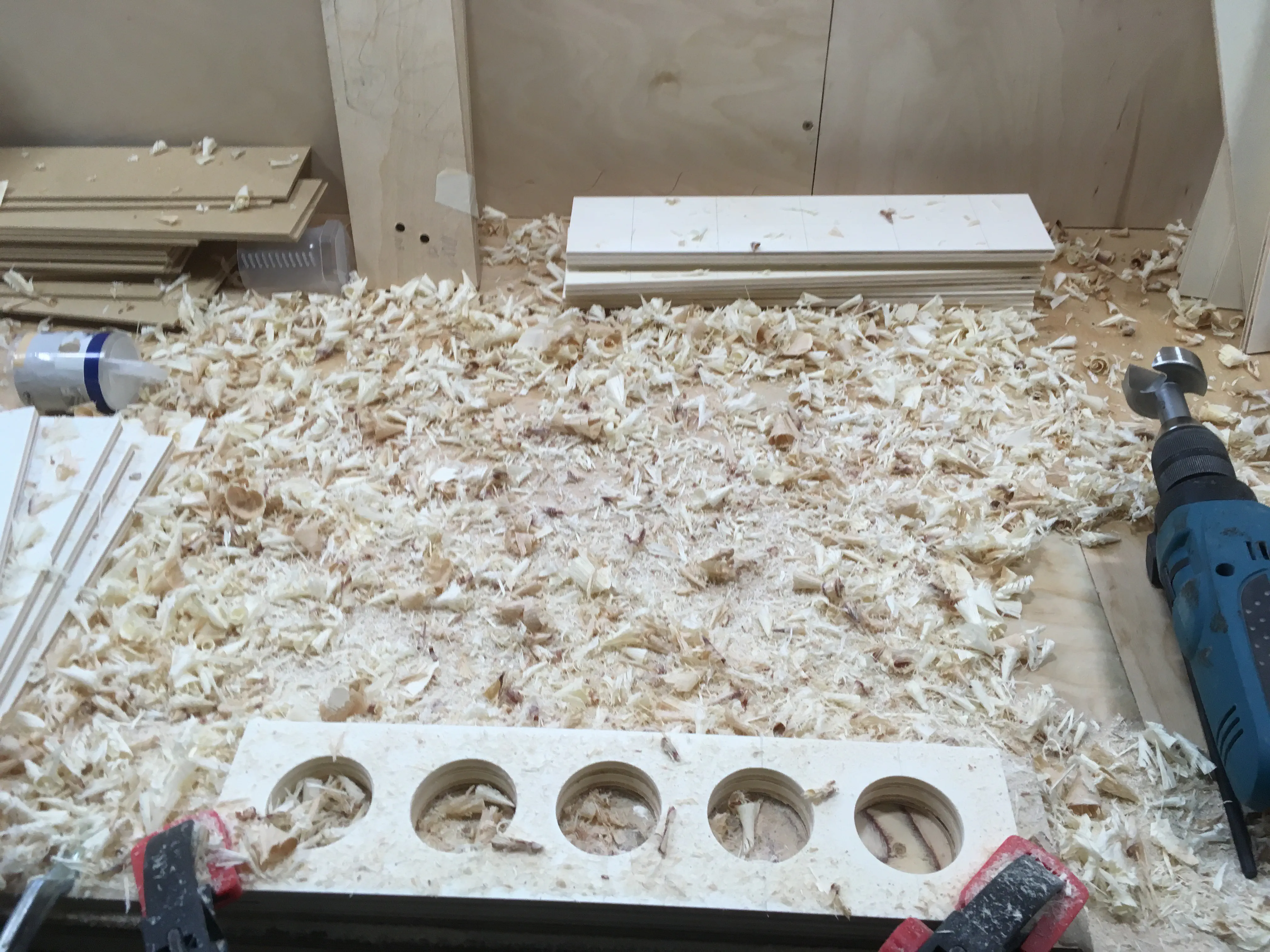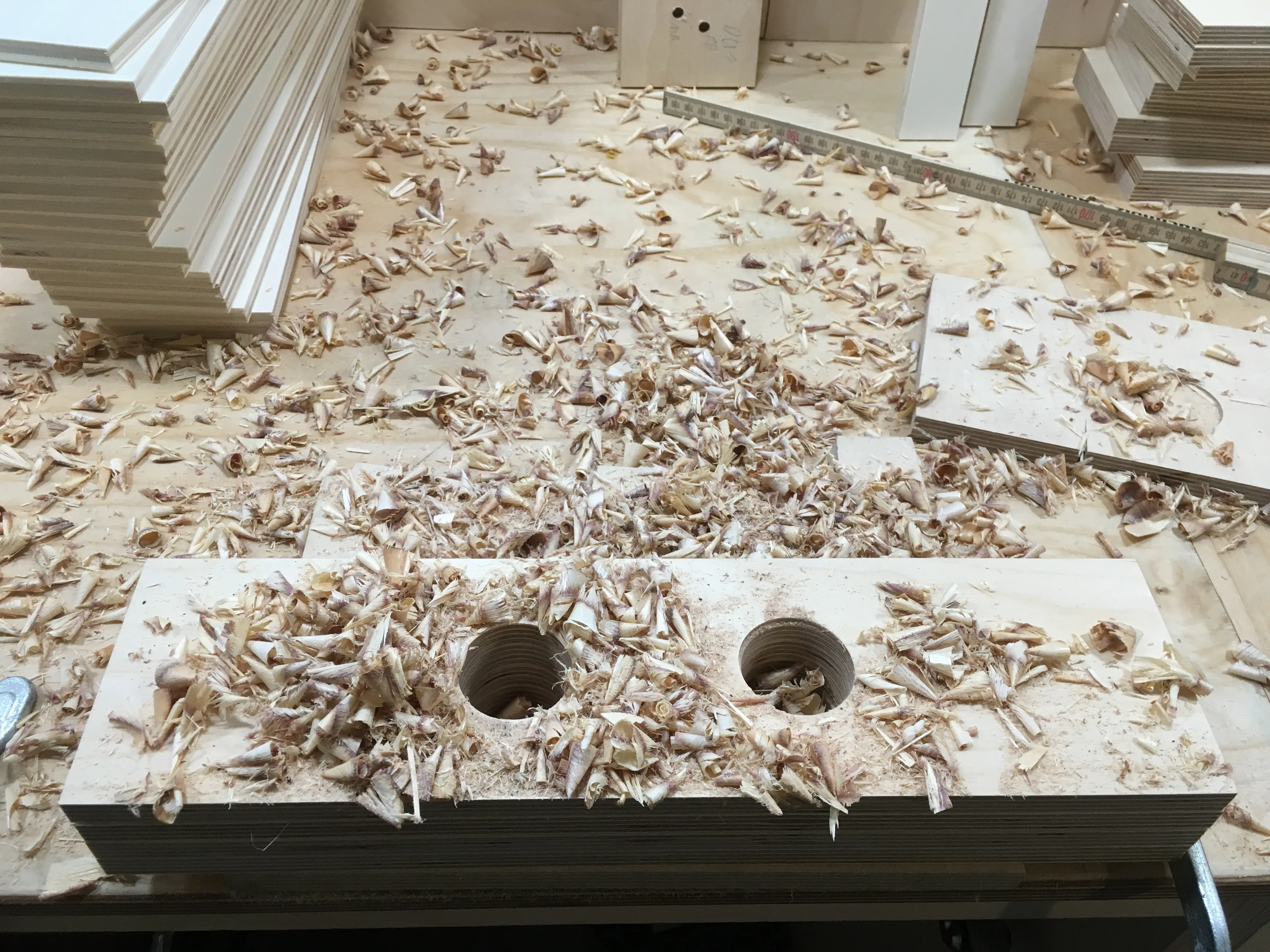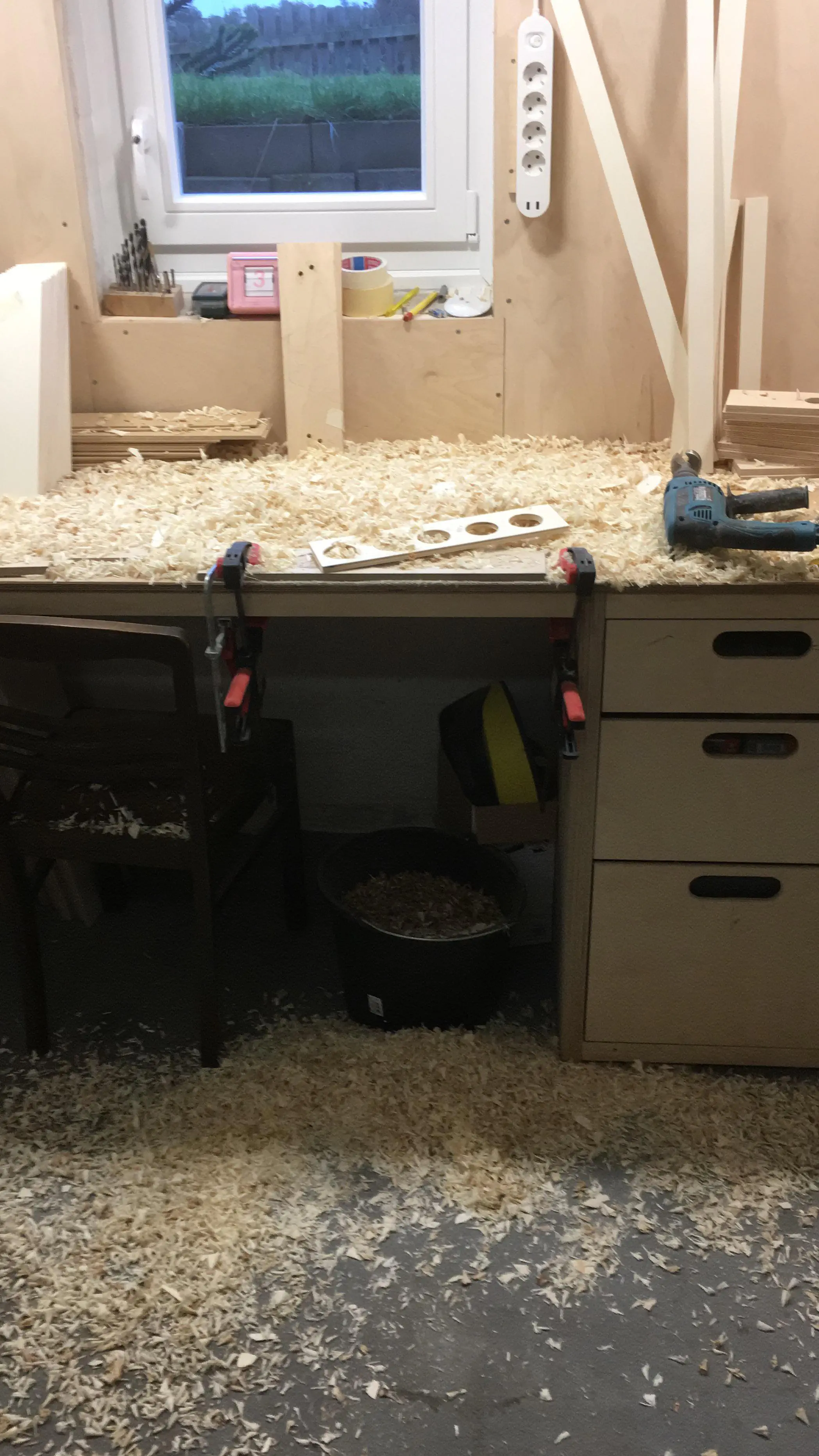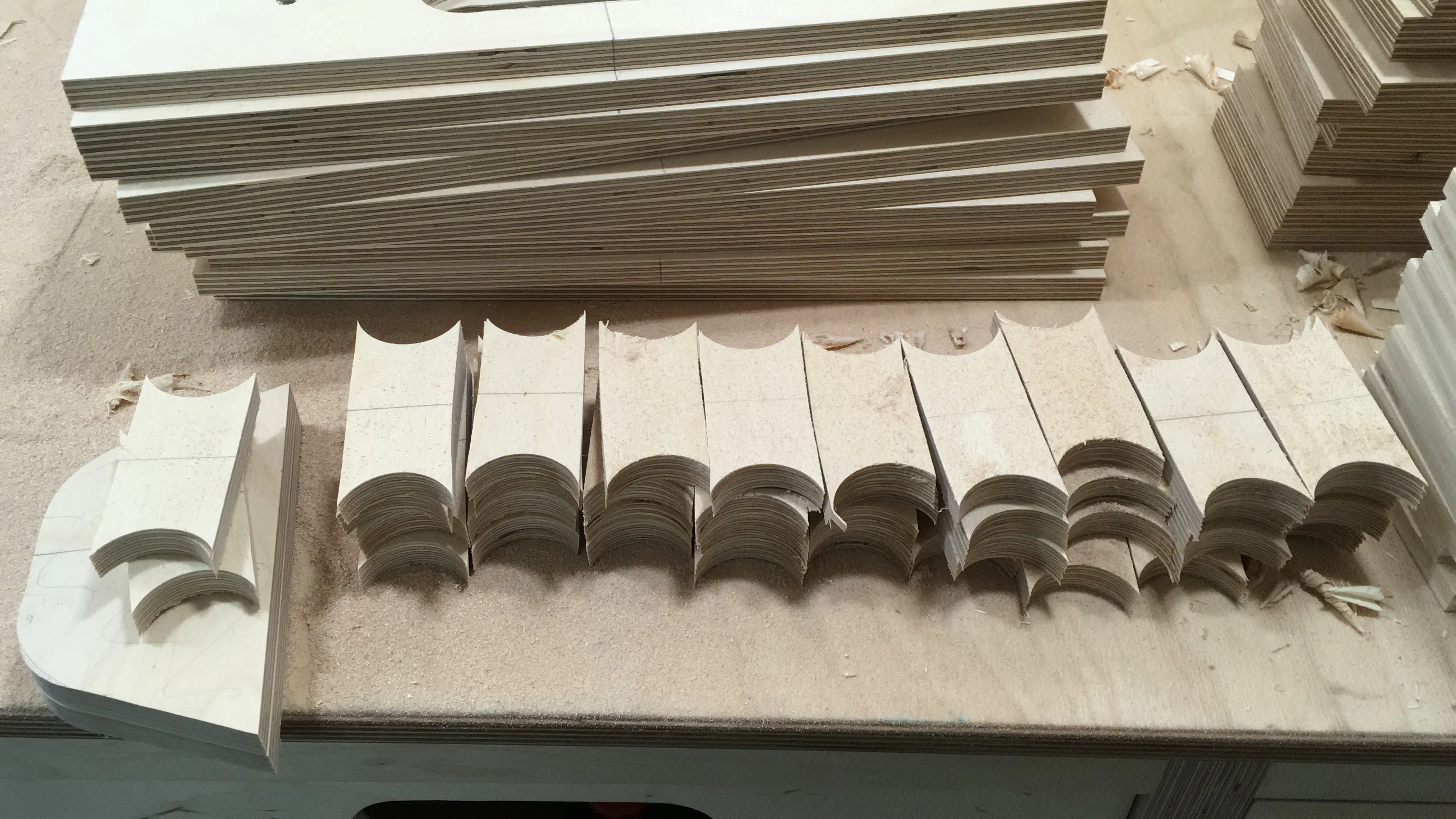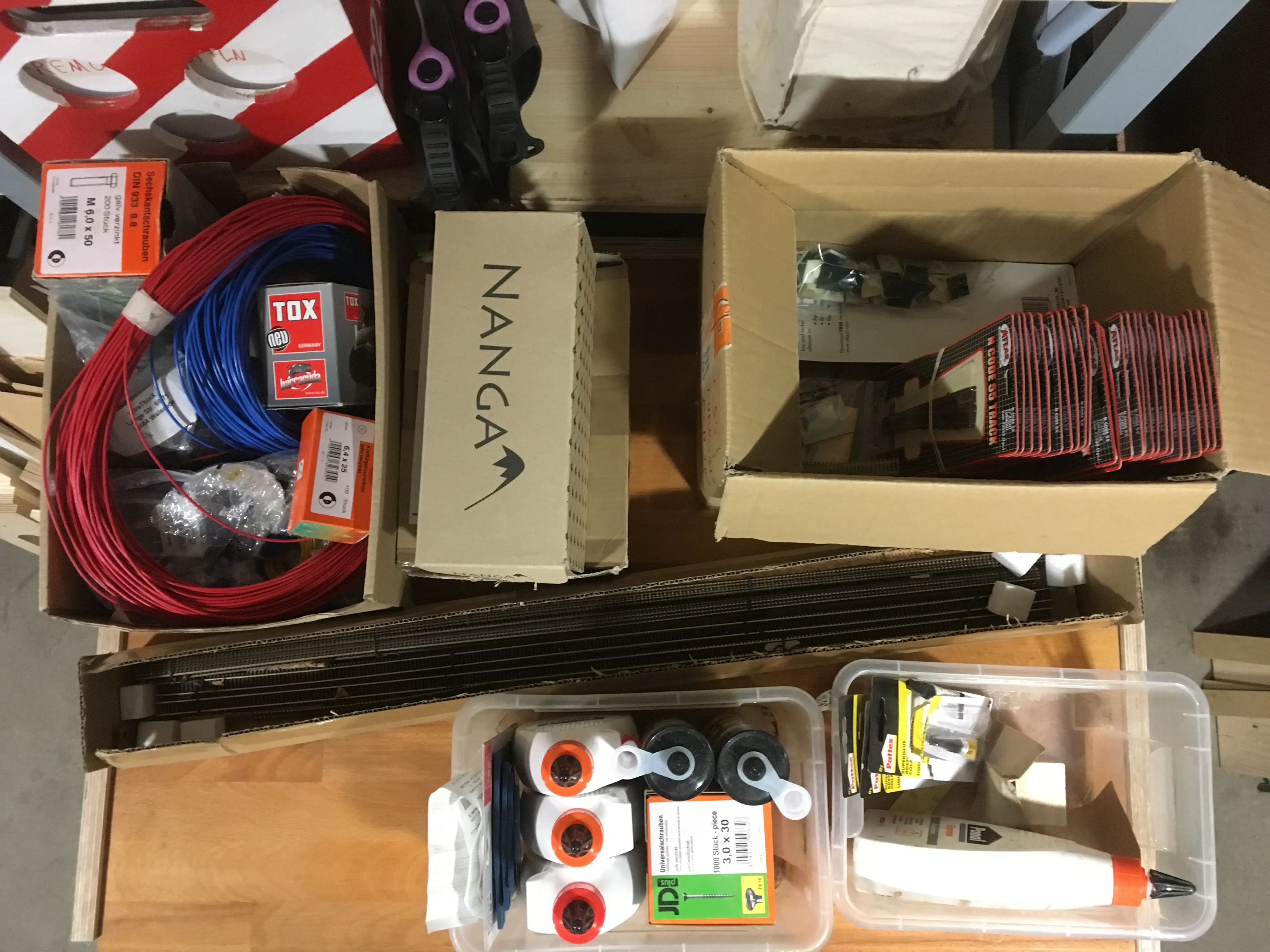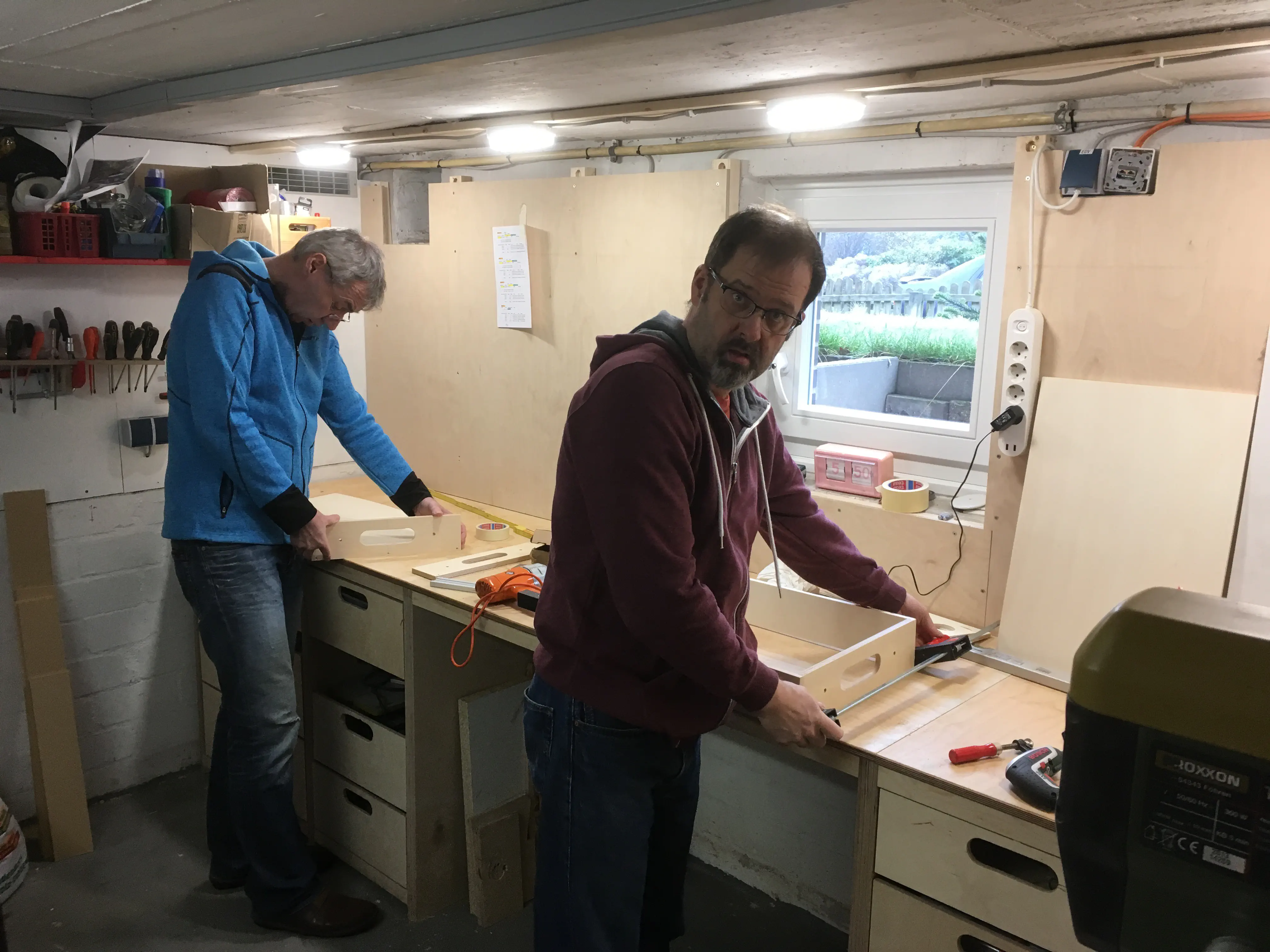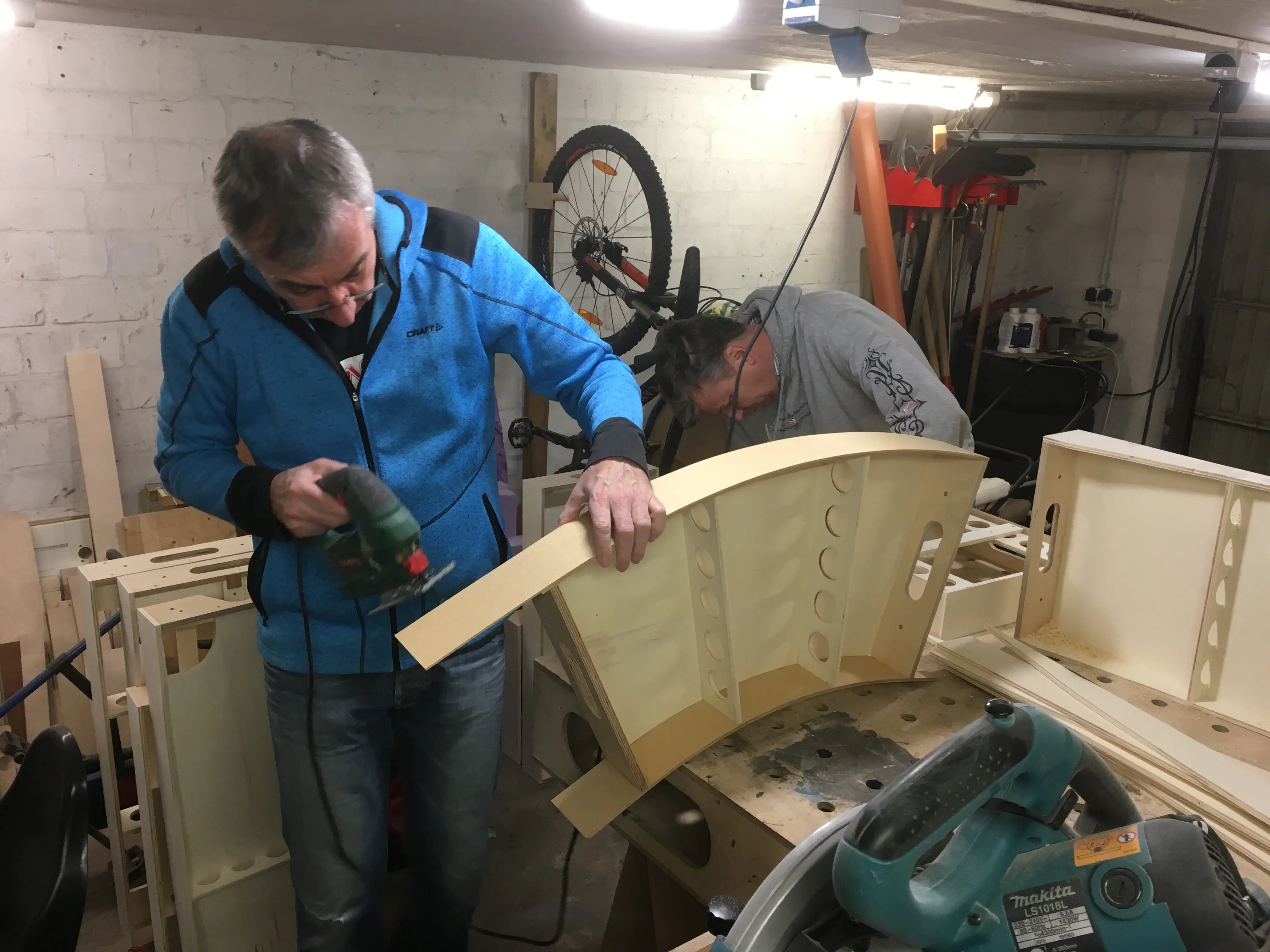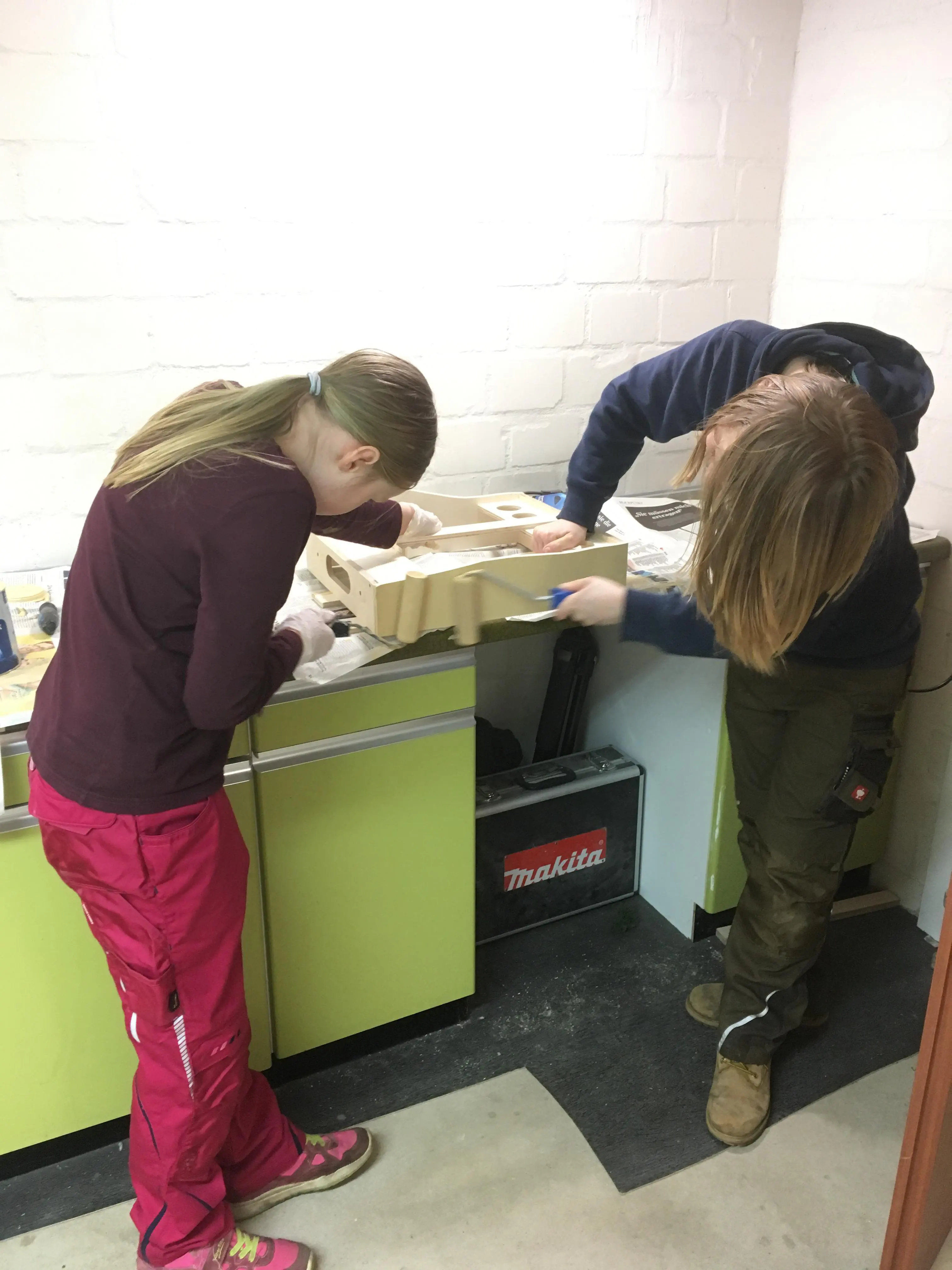Workshop Weekend 2018
By hagen
Last year, Dirk offered his garage for a Workshop Weekend. This year I left my workbench at home and Invited my friends to spent some time drinking coffee, eating pizza and build modules. We agreed on building only line modules. This time we really did so. Peter and I had discussed the idea of a duck under to make it easier to move to the opposite side of the modules. In total we built 22 new modules or segments of modules.
Preparing parts for the modules.Dirk delivered all the plywood parts were bought, readily according to our specifications prior to the weekend. Instead of driving around with my tools and workbench, I spent some time messing up my workshop. I drilled all the required holes into the endplates and made five 50 mm holes in each support that would be used in the module to reduce weight and make the wiring easier. All you need for new modules: Wood, holes, glue, crews, tracks, wires and plugs.To ensure a smooth weekend I had collected enough supplies such as wood glue, screws, wires and flextrack. Luckily my wife allowed us to use her workbench, thus we had three work areas for the different processes and another workbench in the garage for messing around with the miter saw, jigsaw or orbital sander. Screwing, glueing, cutting.At the end of the first day, the woodwork of most modules was complete. Thus my kids were enslaved to paint the modules with the first layer of paint. Painting the modules.Next day was defined by trackwork and wiring. All modules were complete with PCB ties at the end to solder the track on, cork subroadbed, flextrack and wiring. All modules that left my basement were operational and could have been used at the next meeting.If you wonder, why we all know what to do: There is a standard. Have a look at the FREMO americaN Standard. You could build your own modules, join our group – we are active in Europe from Italy to Sweden – or create a modular group on your own. You might meet some new friends and have fun together.

